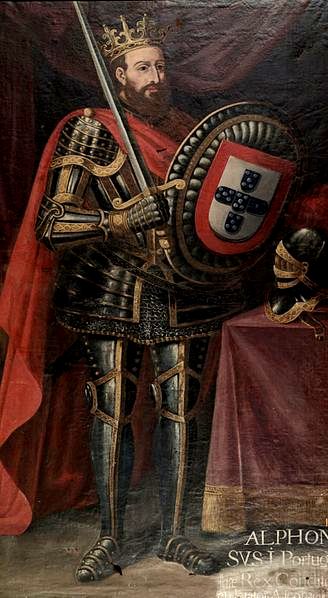Casa do Infante (EN) - Customs House
Today Casa do Infante is a complex of buildings that occupies an extensive area of Oporto's riverfront. It's history goes back to 1325, when King Afonso IV ordered the construction of a royal warehouse against the will of the Bishop, then lord of the town.
Thus the Customs House of Oporto was created, to which all merchandise arriving at the port was sent, so that the respective duty could be levied.
| Casa do Infante - Customs House |
The medieval Customs House
The first building consisted of two high towers and a central courtyard, whose original location can still be identified. The higher floors of the North Tower served as residence.
Commercial development was reflected in the way the Customs House was progressively turned into a monument. As early as the 15th century, King D. João I ordered the construction of a forward section, whose portico was capped with a lintel bearing an inscription and a niche where a statue of the Virgin Protector of Customs Houses must have stood.
| Casa do Infante - Reliefs of coats of arms in Porto |
The service centre of the Crown
To the East of the main building there was a large enclosure, where the Mint, whose origins also date back to the 14th century, operated.
Other services of the Crown, such as the treasury's audit office and notarie's court were later built nearby.
The construction of a wharf for the offloading of ships and the opening of Rua Nova (New Street) - today Rua do Infante D. Henrique - were further consequence of this development, and played a fundamental role in the urban layout of te city's riverfront area.
The trader's Bourse and numerous houses of Royal official and wealthy people were also located in the area.
The birth of Prince Henry
The old Customs House is also associated with figure of Prince Henry, who according to legend, was born there in 1934.
Prince Henry's Oporto origins are known through the chronicler Fernão Lopes. At Oporto's Historic Municipal Archive there is a document describing the expenses effected for the festivities of his baptism in 1934.
The link between the Prince's birth and the old Customs House forms part of a tradition that up until the last century remain alived in the memory of the people.
Research has shown that the northern tower was reserved as a residence for the King's Customs official. It may also have been the Court's lodgings.
In fact, the heir to the throne, D. Duarte, has been born in Viseu three years earlier and in precisely the same circumstances in another residence of the King's Customs Official. The credibility of the popular version is further based on the fact that the building was the largest in the city and the property of the Crown, and the King made use of his lodging rights.
The 17h Century remodelling
In the modern era, the whole complex of the Customs House and Mint went through drastic changes. The façade was once again brought nearer the street, to where it stands today.
The upper parts of the towers were knocked down and replaced by two large roofs.
A 1677 inscription on the door connecting the central courtyard to the eastern part of the building registers these works.
| Casa do Infante - Customs House |
The medieval Mint was partially knocked down during an interval in the work (1607-1688), and later began operating in half of it's space, to the east of the Customs House expansion.
The 19th and 20th Century occupation
The customs services functioned in the building until the 19th century. They were then transferred to another building in Miragaia. Hereafter the Casa do Infante was used as a merchandise warehouse by private entities.
The building was classified as National Monument in 1924 and was the object of major restoration work undertaken by the Direcção Geral dos Edifícios e Monumentos Nacionais (General Directorate of National Monuments and Buildings) at the end of the 50's. It was handed over to the city's authorities, who turned it into the Office of City History.
In 1980, this office gave rise to the Arquivo Histórico Municipal do Porto (Oporto Historical Municipal Archive), which conserves municipal documentation dating back to the medieval period.
This service's requirements led to a remodelling of the Casa do Infante. Advantage was taken of the works to undertake an in-depth study of the historical roots of the building.
Archaeological intervention
It was decided to go ahead with archaeological excavations, whose results, together with the documental and architectural studies, provided detailed knowledge of the site. The excavations gave a richer image of the buildings and the people that used them. In the addition to the everyday objects, the ceramic and glass objects, the custom's seals and other objects that were found constitute important indicators of the commercial fluxes that supplied the city of Oporto.
The archaeological research has also enabled the discovery of vestiges of previous occupations in this riverine area. Important evidence was found of Roman occupation, notably the first mosaics of the Lower Empire found in Oporto.
The current building
The conversion of these traces into museum-worthy materials, in the place where they were found, was a key element for the facilities refurbishing plan.
A museum tour shows the site's history, since the Roman occupation, using multimedia resources and an interactive model representing medieval Porto. The services provided by the Historical Archives have improved in terms of quality, not only with an increase of the capacity of the storage rooms and the fine tuning of the preservation conditions of documents, but also with specialised laboratories, large reading rooms and a vast set of cultural and educational activities.
Veja também:
Torre dos Clérigos tower (EN)
Veja também:
Torre dos Clérigos tower (EN)
João Pires
|





Comentários
Enviar um comentário